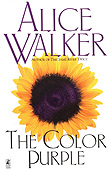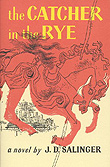Berkeleyan
A snapshot of student reading habits over two decades
Surveys identify ephemeral, and enduring, choices — from Austen to Obama
![]()
| 30 April 2008
What books are Berkeley students reading today, and how do their reading tastes differ from a generation ago? Three large surveys of freshmen, conducted over 20 years’ time — in 1987, 1997, and 2007 — together offer glimmering, if unscientific, insights into student reading trends.
Top reads of UC Berkeley undergrads 
1987 (ties indicated)

1997 (ties indicated)

2007 (tie indicated)
|
Millennials’ faves
On Bullshit (Harry G. Frankfurt) shares that vast 2007 list with Dune (Frank Herbert), while How Soccer Explains the World (Franklin Foer) cohabits with Tender Is the Night, Don Quixote, and Hamlet. Several students said they had read Hamlet on their own; only one felt the need to add “not kidding!”
Authors named range from Toni Morrison, Upton Sinclair, Vladimir Nabokov, and Virginia Woolf to Robert Ludlum, the two Clives (Barker and Cussler), and Dean Koontz. Bestsellers (literary and not) share the list with classics, science fiction, and mysteries.
Fiction dominates, though a substantial number of books mentioned are from the non-fiction shelves. Garry Wills’ Lincoln at Gettysburg had an advantage, as it was distributed free in fall 2007 to all freshmen in the campus’s College of Letters and Science through the “On the Same Page” program. Other mentioned non-fiction titles include Richard Dawkins’ The God Delusion, the Dalai Lama’s The Universe in a Single Atom, Jared Diamond’s Guns, Germs and Steel, and Please Kill Me: The Uncensored Oral History of Punk (Legs McNeil and Gillian McCain).
The most-read author on the 2007 survey is J.K. Rowling, with fully 30 percent of the students naming one of the Harry Potter books. Other authors in the top 12 were all very distant below Rowling.
A number of spiritually oriented and self-help books also made the cut — among them Secrets of Mental Math, Chicken Soup for the Teenage Soul on Tough Stuff, The Complete Idiot’s Guide to Weight Training, and How to Stay Christian in College. Other students, meanwhile, were consuming 100 People Who Are Screwing Up America, Why Do Men Have Nipples?, and I Hope They Serve Beer in Hell. The saddest comment came from a student who said, “I can’t remember the last time I read a book just for fun.”
Seven of the books named in response to the 2007 survey had been recommended on Berkeley’s most recent unofficial Summer Reading List for Freshmen: The Ecology of Fear (Mike Davis); The Parable of the Sower (Octavia Butler); Island (Aldous Huxley); A Canticle for Leibowitz (Walter M. Miller Jr.); Lord of the Flies (William Golding); Survival in Auschwitz (Primo Levi); and Falling Leaves (Adeline Yen Mah). The theme of that list, by the way, was “Survival!”
Enduring classics and international authors
One take-away message from this trio of surveys is that classics endure. In fact, many authors and titles have appeared all three times. Jane Austen is one such author. Both 1987 and 1997 saw six mentions of Austen books; in 2007 there were 37 mentions. In 1987, Kurt Vonnegut got eight mentions; in 1997 there were six; in 2007, 32.
In 1987, Stephen King was king of the list, with 24 reporting they had read one of his books. But Alice Walker’s The Color Purple was the single-most-popular book, with 17 mentions. Twenty years later, in 2007, King slipped below the top 10, though he still earned 19 mentions. San Francisco’s own Danielle Steel also ranked high in 1987 — but disappeared from the 2007 list. Sidney Sheldon, also big in ’87, was mentioned just twice in 2007.
In 1997, Amy Tan was the most-read author, with 18 mentions for three different works, while the most popular book was novelist and political philosopher Ayn Rand’s The Fountainhead (eight readers). Various books by Rand, a proponent of individualism and laissez-faire capitalism, earned 15 mentions in 1987, 11 in 1997, and 25 in 2007.
Each time the survey has been conducted, Toni Morrison, J.D. Salinger, F. Scott Fitzgerald, George Orwell, and Fyodor Dostoevsky, among others, have held their own. But in neither of the first two surveys did a single author achieve the high percentage that Rowling did in the 21st century.
One observable change in 2007 is the increased ethnic and cultural (and even linguistic) diversity of the books and authors on the list. Several students named books written in Spanish and Chinese. Many others indicated they had read books by (among others) Indian, Chinese, Cambodian, Japanese, Mexican, African, and African American authors — such as The Space Between Us (Thrity Umrigar); The Melancholy of Suzumiya Haruhi (Tanigawa Nagaru); The Dying Ground (Nichele Tramble); Always Running: La Vida Loca: Gang Days in L.A. (Luis Rodriguez); and First They Killed My Father: A Daughter of Cambodia Remembers (Loung Ung).
What conclusions can we draw from these admittedly unscientific surveys? Student do manage to read for enjoyment, and they read widely. Bestseller lists (and Oprah?) influence their reading, but clearly they have strong wills of their own. Can we explain Madame Bovary, Our Man in Havana, All Quiet on the Western Front, Great Expectations, and The Screwtape Letters as recreational reading among college students? No — but we can be thankful.
Steve Tollefson is director of Berkeley’s Office of Educational Development, a lecturer in the College Writing Programs, and a recipient of the Distinguished Teaching Award. He started the Survey of Freshman Reading Habits on a whim in 1987.
For overall results from the fall 2007 survey, visit the Survey of New Students website (newscenter.berkeley.edu/goto/frosh07); questions 42 and 42a pertain to recent reading.

